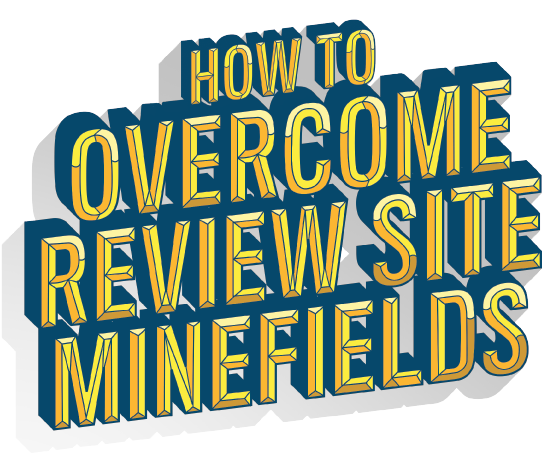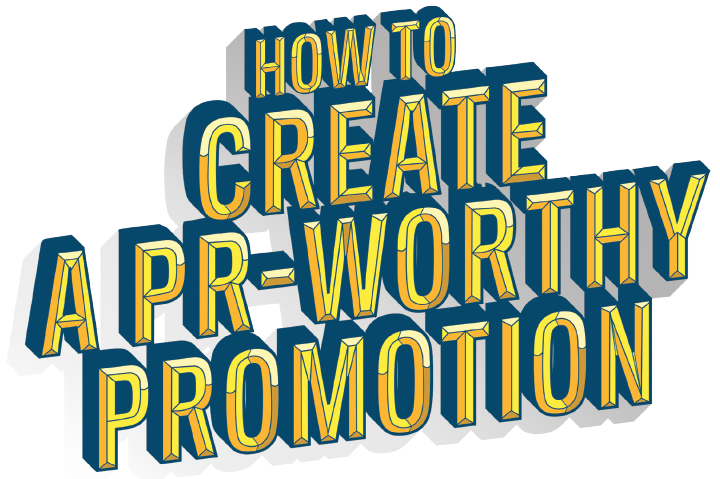EVERYONE ON SANIBEL ISLAND, FL, knows Lily & Co. Jewelers. And it’s not only because the business was named for a dog. According to Dan Schuyler, who co-owns the store with Karen Bell, public relations of one kind or another drives the entire business. Because they promote themselves (and Lily) as local celebrities, others see them that way, too.
“People say I am everywhere,” Schuyler says. “I am the face of the company, but when I go to Chamber of Commerce after-hours events, it’s not just me, it’s the whole staff and we are wearing the Lily & Co. T-shirts.”
Rebecca Hasson, former marketing director for Bernie Robbins Jewelers in Pennsylvania and New Jersey, experienced the fast-changing PR landscape over the 10 years she spent with the company.
“Traditionally, your PR firm maintained your reputation and got you editorial placement,” she says. “Now, the first thing customers do before they shop is go online and read reviews. Every single person has a voice now.”
Traditional PR used to be one of the few ways — other than paid advertising — for a small business to get noticed. But increasingly, public relations means finding your own voice through traditional media channels, visibility in the community and social media.
“Today, there are so many ways that you can get noticed that do not require going through mainstream media,” says David Meerman Scott, author of The New Rules of Marketing and PR. “You can create your own original content in the form of a blog, or images or videos. The whole world of public relations is open to us.”

Dan Schuyler and Karen Bell of Lily & Co. Jewelers are celebrities on Sanibel Island, FL.
The first step, according to Scott, is to ask yourself, “How do I best reach my potential customers?” Start with the idea of WHO you are trying to reach and then figure out how you can understand and reach them.
From an agency perspective, Lilian Raji of the Lilian Raji Agency in Atlanta says her role has grown to encompass a wide range of responsibilities.
“While I call myself a PR agent, I also do what is traditionally considered marketing,” she says. “I create a strategy based on what a client needs. That can be press outreach, it can be building relationships with consumers directly. Traditional PR focused exclusively on media relationships, but in this day and age, you can’t really do that. The consumer is making decisions about where and what to buy based on their own research.”
It’s easy to get so wrapped up in social media and online reviews, though, that you forget the basic people skills crucial to survival, says Schuyler. Although Schuyler takes on social media with as much enthusiasm as he does everything else, he doesn’t do it at the expense of traditional media channels or of building relationships offline.
“If you want to sit around and be a sad ass and do nothing, that’s your choice,” he says. “If you want to be a glad ass and get out in the community, your business will be successful.”
In a nutshell, PR, whether directed in-house or by an agency, should be both your bullhorn and your buffer. As author Ed Zitron writes in This is How You Pitch: How to Kick Ass in Your First Years of PR, you need both to get out the good news about your brand and to protect your reputation.


Kent Bagnall uses a radio opportunity to spread the word about his business.
Kent Bagnall’s Kent Jewelry is in Rollo, MO, a county seat of about 20,000 with an influence area of about 50,000. Students at the Missouri University of Science and Technology make up a third of the population. The town is also 100 miles away from three metropolitan areas, putting them in the middle of nowhere (or everywhere), Bagnall says.
When Bagnall opened his store in 1990, he became active in the Chamber of Commerce, Ozark Actors Theatre, Rotary Club and other groups. He realized early on that the best response he had for his marketing dollar was the local radio network. He did live radio commercials on the popular radio show called “The Morning Mayors” on weekday mornings from 7 to 9 a.m.
“I would use my weekly three minute ‘ad-libs’ to talk about the current events in the community, theater, arts, chamber, sports, farmer’s market, and then mention that I had a jewelry store.” The spots grew from three to 10 minutes, and he sometimes has a free platform as well.
“One day I was asked to substitute for a vacationing ‘mayor’ and was used as a temp for about a month during an illness of one of the permanent hosts. Now I’m the go-to host when one of the regular ‘mayors’ is ill, on vacation or has another commitment.”
Al Louis of Designing Jewelers in La Cross, WI, trades banter once a week with the hosts of the lighthearted local “Lead Balloon Show” on AM radio. Its long-running holiday special is broadcast from the store, where the local rabbi sings Hanukkah songs and other performers deliver their own Christmas carols.

The time to prepare for a bad review is before you get one, Scott says. If you are regularly active and responsive on review sites, you can build a good reputation for customer service and create a following. “If you are reviewed on a particular review site where you have zero positive reviews and a negative review comes up, that can affect you. But if you have a lot of positive reviews and a single negative review comes up, I think that’s a good thing. It shows the reviews are real.”
“If you’ve done a good job online and somebody says something negative about you for whatever reason, others will come to your defense and say, ‘Oh, this person isn’t really like that,’ or ‘I love their products.’ That can only happen if you are already active on that social network.”
Fortunately, Lynelle Schmidt, digital marketing director for Long’s Jewelers in Burlington, MA, had taken the steps to build a positive following on social media before disaster struck in November 2015 when she watched Long’s almost perfect five-star review on its Facebook page plummet to below two stars — overnight. “I noticed that we had received over 100 fake one-star reviews from profiles that were clearly not real people. The reviews came all within a matter of minutes.”
She sought support from inbound.org, a respected online community. The website’s editor and top contributors determined the reviews came from a site called Fiverr, where reviewers can be hired to write fake comments for $5.
She decided to post a public message on Facebook, letting followers know what had occurred and asking for honest reviews to balance out the fakes. “We garnered hundreds of positive five-star reviews. We were able to take a negative experience and completely turn it around.”
Schmidt says the best thing to do in a similar situation is to take screenshots of the evidence, report the attack to the offending site, and also tap into your loyal customer base of followers and ask for help without asking for five-star ratings.

In 2015, Debbie Fox of Fox Fine Jewelry in Ventura, CA, teamed up with a local radio station to create a “Golden Lawn” contest to spread the word about water conservation. People who brought in a picture of their “golden” (rather than green) lawn were entered into a drawing for a $1,000 shopping spree at Fox, to be given away during an event featuring conservation vendors. Concurrently, the radio station ran a “Gold is the New Green” contest; people who posted signs in their yard and photos on Facebook qualified for prizes.
Fox has a history of attracting media attention by demonstrating a high-profile interest in the community. During the recession, unemployment in California had reached 10 percent in 2009 when Fox realized that a lot of locals wouldn’t be able to buy Valentine’s Day gifts.
Deciding to give away 100 sterling silver pendants to the unemployed, Fox contacted a reporter at the Ventura County Star, who published a brief announcement. Word spread quickly — first all over California and then all over the country.
“By the time I got to work, all of the networks had shown up,” she says, while the jobless lined up in front of her store for the necklaces, some driving several hours to get there. Beginning to realize the appeal, Fox contacted IJO and asked fellow members to join her. She gave away almost 200 before Valentine’s Day, while 46 IJO members also committed to giving away at least 100 necklaces each.
“If I had been giving out loaves of bread, it wouldn’t have been news,” Fox says. “It became a symbol for many people about what each of us could do. Jewelry sales is an area in which you really need to develop trust. People have said anyone who is giving away something for nothing is someone I can trust.”

Get to know local media representatives, says Lydia Baehr, a PR professional in Houston. “Remember, you can’t tell the media what you’d like them to say. The best thing to do is get to know them. If they can count on you to have a good story idea, they will get in touch with you.”
Becoming the jewelry authority in town has been a work in progress for Wattsson & Wattsson Jewelers in Marquette, MI. President Chris Wattsson sends out press releases about everything that happens at the store, big or small.
“Because our market is so small, the TV and print media are always on the lookout for stories that are positive and community-minded,” Wattsson says. “We’ve been able to get to know the reporters, which makes it easier to pitch story ideas.”
Wattsson’s tips for writing press releases:
1. Be yourself. Be real.
2. Make it easy for the reporters. Include quotes and photos in case they aren’t able to do an interview.
3. Include all the information, especially about events.
4. If you’re not sure if it’s news, ask, so it won’t be mistaken as an advertising pitch.
5. Follow up. If you say you can send additional information, do it, and do it quickly.
<
6. PR is not as scary as it seems. Remember that.
And make the most of advertising partnerships to connect to editors. After Rex Solomon of Houston Jewelry had been advertising regularly with the Houston Chronicle daily newspaper, he asked his ad rep to arrange a meeting with editors and reporters in the style and business departments. He let them know he could be a resource for information about shopping trends, retail, jewelry, crafted precious metals (gold buying), and the store’s free education exhibit of life-size replicas of the crown jewels.

1. Produce videos that feature yourself and your store. When Donna Soodalter-Toman moved her store, DIVA (Donna’s Infinite Variety of Adornments), from Newton, MA, to Gloucester, MA, she found a local video site with a following of more than 8,000. She contacted the site’s operator, produced her own videos and linked them to her website and Facebook page. Once she introduced herself with the first video, she also partnered with her neighborhood cinema to have the video run there. She also paid to boost it on Facebook. The first video went so well that she did others — one showcasing jewelry relating to the sea, another for Halloween. “The videos really work; they are very personal and a lot of fun,” she says.
2. Respond in real time to complaints. Be prepared to respond immediately to customer feedback. “It used to be you had time to react, to respond slowly,” David Meerman Scott says. “Today, when someone says something, they expect a response right now, not tomorrow, not even this afternoon. If you are quick, you have an advantage.”
3. Enlist local influencers. Identify the “queen of the ladies who lunch” in your community and try to build a relationship with her. Loan her something to wear to the ball or gala and make sure she is photographed wearing your jewelry, says Atlanta PR professional Lilian Raji. This also goes for influential bloggers.
4. Use real people’s photos on your website, preferably happy clients, says Scott, to give your site and your business authenticity.
5. Build your numbers. Nothing says unpopular or old-fashioned more than small numbers of followers on a Facebook fan page. Work on building followers wherever you decide to have a profile, says author David Newman in Do It! Marketing.
6. Consult a professional. PR professionals spend time and money to establish relationships with media. If you want to hire such a professional, look for someone who gets you and can be completely honest with you, Raji says. “I turn down clients if I can’t help them or if I feel it’s going to be a challenge, either not being able to get them press, or it might be a personality challenge. Look for somebody who asks a lot of questions. It can’t be a cookie-cutter approach. Be open-minded about their suggestions. But if they want you to change your whole business model, they shouldn’t be working with you in the first place.”
7. Give ‘em something free with your name on it, says Dan Schuyler of Lily & Co.: “No one leaves the store without having something in their hand that has Lily and Co. on it. A mouse pad, coffee cup, teddy bear, Frisbee, that’s free advertising.”
8. Write a helpful/funny blog. “Business owners make the mistake of writing about their own products and services, but consumers are looking for information that’s going to help them or be funny or interesting,” says Scott. Do blog, urges Newman, because blogging is forever. A blog continues to sell your company and your value day after day and year after year.
9. Offer classes. Thomas Mann of Thomas Mann Gallery I/O in New Orleans teaches jewelry-making fundamentals to everyone from little kids to senior citizens. “The teaching aspect of my career has become a really important part of who we are,” Mann says. Last year, studioFLUX offered a metalsmithing summer camp for 9- to 12-year-olds.
10. Start an internship program. You need someone monitoring every social channel you have and every review site out there. Share the duties among sales consultants or create an internship program with a local college student, says Rebecca Hasson, former PR manager at Bernie Robbins. “Kids that age grew up with social media.” What to look for? “They need to be able to develop a passion for your brand and an understanding of your culture, quickly. They should also have excellent writing skills and the potential to be a crisis manager.”
11. Be timely. Aaron Faber Gallery in Manhattan hosted an educational roundtable event about watches, with experts debating the merits of Swiss luxury mechanical watches vs. the Apple Watch. The event coincided with the launch of a second-generation Apple Watch. “That got a lot of buzz,” says Patricia Faber. “We had a lot of people there and we had a lot of after-market interest online and via email.”
12. Ask for reviews. “We are in the referral business,” says Kate Peterson of Performance Concepts. “The way you get that referral business now is by asking for reviews. Podium is getting a lot of press for helping businesses secure positive reviews from their customers. You can’t make a negative review go away; the only thing you can do is get as many positive ones as you can to improve the rating. If you have one negative review and a lot of positive reviews, people will think, well, that person was crazy.”
13. Promote good press on your website. A website is not like a business card. Websites are organic and need to constantly be updated, Lydia Baehr says. “Share the links of the press that you do get. Have a press room on your website, to which you can refer journalists or bloggers looking for images that are ready to go. Invest in great photography.”
14. Respond to reviews. Listen and respond to everyone, says Dave Kerpen, CEO of Likeable Local. If you see a negative post or review, rather than freak out or ignore it, react in the most constructive way possible. Respond publicly, indicating you are going to solve the problem privately. Remember that it’s never too late to respond. If you have a lingering complaint that you ignored initially, go back and answer it NOW and do your best to resolve it. Most visitors to Yelp or Google won’t even notice the gap in time between complaint and response.
15. Commit to an agency. If you work with a PR company, invest in the long term, Baehr says. A year’s contract is better than hiring for one project at a time because the magic doesn’t happen overnight. “If there’s a magazine you want to be in and it’s quarterly, you have to have your information to them six months in advance,” she says. “If you’re paying us for 30 days, you are only going to get the media outlets that need something in two weeks.”
How To Rebound From PR Disaster
In 2008, when the bank seized David Nygaard’s home, his seven jewelry stores in Virginia and all of his inventory, he experienced what he describes as a public disgrace.
Running a multi-million dollar business with multiple locations meant he was a public figure in his market and his financial troubles attracted attention. But because he was well-regarded in his community, his fall from grace wasn’t as debilitating as it might have been. “Because we did a lot of charitable work in the community, a lot of people supported us,” Nygaard says.
The key to being able to start over, he says, was being up front and “owning whatever problems you bring to the table.”
“One of the first things we did was work to protect the interests of our clients.” Nygaard refused to turn over any inventory belonging to his clients if it had been paid for or if it was in his possession for repair. “We took the items to the one store we were able to reopen and gave refunds to those who were unhappy. Things we were able to deliver, we delivered. We took care of our responsibility and they supported us.”
He did his best to tune out the noise around him. “Regardless of what everybody is saying in the midst of a situation like that, you need to do the right thing and look after everybody’s best interest.”
Then he started over in a new direction.
“When the inventory was seized, all I had was two software keys of Matrix and some old brass and glass samples, and I used those two pieces to create a new business model,” he says. “I rebuilt a supply chain and in some cases we were able to work on the relationships with the same suppliers to do business again.”
He rebuilt his local reputation painstakingly, with one custom job after another, and now specializes in custom engagement rings, using 3D printing and CAD modeling.
“I’m going back to the old tradesman approach to the business,” he says. “I’m a tradesman and my jeweler is a tradesman. We do the work in house, except for casting. These days I think you have to be a tradesman and you can’t just be the business-management guy. Yes, I have an MBA but I also am a certified gemologist appraiser. Now I think you have to actually be a jeweler to be in the jeweler business.”
His PR strategy focuses on reviews and social media, and charitable donations within his more limited means. His CRM software sends out emails and surveys to clients after they’ve picked up their rings, and also automatically requests reviews. As one of only 40 master gemologist appraisers in the United States, he continues to receive attention from the press, too, as a local expert. His approach to PR, marketing and advertising is radically different these days from what it was pre-recession.
“Our niche is custom engagement rings, and that’s a thin market to do broad-based TV advertising like we used to,” he says. “Now, we’re marketing to young men getting engaged and we might be talking to about 500 guys in a market of 2.5 million people. It’s silly to hit 2.5 million people to talk to 500 guys.”
In the event of a high-profile setback, Nygaard recommends looking for opportunities in whatever rubble is still around. “You never fail until you quit.”
“It’s been a grueling decade,” Nygaard says. “But I’m happier now in many ways. I went through hell, including a nasty divorce. My home was foreclosed on by the bank. We had predatory creditors. Banks that were desperate for cash made mincemeat of me and my family. An employee who had embezzled money from me wound up buying my house. But in the end, I was able to buy my house back. I’m back in the store in Hilltop, back living in my home in Virginia Beach, after eight years in the wilderness.”
More Tips for Boosting Your Image
- PINPOINT YOUR GOALS. When you are trying to identify your message, do what Beth Cevasco did. She owns Scott’s Custom Jewelers in Columbus, OH, and also has a degree in public relations. “We put a piece of paper on the wall that said, `What is our core?’ We are deciphering what we want to be as a company, what is our main business and what are we going to focus on. PR is a very important part of that. Having goals helps fuel other aspects of the business, too.”
- STUDY UP. Media has changed, but the need to understand it has not, says Beth Cevasco of Scott’s Custom Jewelers. “I had to relearn everything,” she says. “I got books like Social Media for Dummies and Blogging for Dummies. I had to figure out the media and how they worked, and look at my core business and figure out how that is going to be supported by them.”
- THINK OF SOCIAL MEDIA LIKE A COCKTAIL PARTY, says author David Meerman Scott. “Do you go into a cocktail party and ask every single person you meet for a business card before you agree to speak with them? Do you try to meet every single person, or do you have a few great conversations? Are you helpful, providing valuable information to people with no expectation of getting something tangible in return? Or do you avoid the social interaction of cocktail parties altogether because you are uncomfortable in such situations?
- PRACTICE DETACHMENT. “It’s hard to listen to an angry customer,” says Debbie Fox. “So I imagine I’m an outside consultant and this isn’t happening to me. Then I can better sympathize with the client and diffuse the situation. As painful as the process might be, and as right as I believe I am, many important business changes at Fox originated from disgruntled customers.”
- OFFER STAFF INCENTIVES. The staff at Lily & Co. is motivated to be brand ambassadors and attend events alongside the company’s owner. “They work on an incentive program based on the revenues of the store. I share the profit with the staff, so it’s their store, too,” says Dan Schuyler.
- ANTICIPATE ISSUES. “If a customer is unhappy, don’t hold your breath, cross your fingers and hope nothing blows up on you,” says Kate Peterson. “If a customer is unhappy, and you KNOW when a customer is unhappy, get in front of the situation before it blows up online. Assume that if there can be a problem, there will be a problem.”
- INTEGRATE PR AND ADVERTISING. Dan Schuyler supplements his social media and relationship building with widespread advertising to reach his target customer: middle-age women. “You have to use the drip, drip, drip theory. I hit everything – newspaper, radio, TV, magazine. I cover it all. Do it every day, every week, every month. Don’t stop. Keep moving forward. When you rest on your laurels is when you get caught. When people are in hard times they cut back their advertising. I would cut my salary back first.”
- TRY PUBLIC SPEAKING TO FIND YOUR VOICE. Dan Schuyler suggests jewelers who aren’t comfortable in the spotlight take a public speaking class. Schuyler credits much of his success in PR and marketing with a Dale Carnegie course he took.
- TIE IN GUEST STARS. At Star Jewelers on High in Columbus, OH, Rachel Howard and her family brought in a jewelry appraiser who works for the PBS TV show, ANTIQUES ROADSHOW. The guest met with delighted customers by appointment.